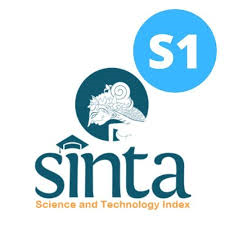ON THE EVOLUTION OF DIPODIUM R. BR.
Abstract
Dipodium R. Br. (Orchidaceae), a genus of ca. 38 species, should be divided into an Australasian clade and a Malesian clade, based on morphological and geographic evidences. Dipodium section Dipodium and section Leopardanthus (Blume) O. Kuntze are re-defined to accommodate this change. An evolutionary scenario that explains this division is proposed. The lack of diversity of floral structure in the genus is probably caused by pollinator-specificity, while the diversity of plant form may be due to long-term environmental factors. An evolutionary explanation is suggested for the complex between Dipodium fevrellii J. J. Sm. and the hybrid D. pandanum Bailey in New Guinea. The complex in Java involving D. pictum (Lindl.) Rchb. f. and D. scandens (Bl.) J. J.Sm. is discussed, and the presence of a hybrid noted.In Borneo, the complex taxonomic situation caused by repeated inter-breeding of populations is noted.
Keywords
Full Text:
PDFReferences
BERNHARDT, P. & BURNS-BALOGH. 1983. Pollination and Pollinarium of Dipodium punctatum. Victorian Nat. 100: 197–199.
CAMERON, K. M., CHASE, M. W., WHITTEN, W. M., KORES, P. J., JARRELL, D. C., ALBERT, V. A., YUKAWA, T., HILLS, H. G. & GOLDMAN, D. H. 1999. A phylogenetic analysis of the Orchidaceae: evidence from RBCL nucleotide sequences. American Journal of Botany 86: 208–224.
CLEMENTS, M. A. 2003. Molecular phylogenetic systematics in the Dendrobiinae (Orchidaceae), with emphasis on Dendrobium section Pedilonum. Telopea 10(1): 247–298.
COMBER, J. B. 1990. Orchids of Java. Bentham-Moxon Trust, England: 385
DEARNALEY, J. D. W. 2006. Recent studies of the biology of the yellow hyacinth orchid - Dipodium hamiltonianum. Orchadian 15: 128–130.
JONES, D. L. 1988. Native Orchids of Australia. Reed Australia.
LING, C. Y. 2011. Caught red-handed – stingless bee robs pollinia from corymborkis veratrifolia. Mal. Orc. J. 8: 111–112.
O’BYRNE, P. 2013. A revision of Dipodium in Peninsular Malaysia Mal. Orc. J. 12: 59–92.
O’BYRNE, P. A revision of Dipodium section Leopardanthus. (in prep.)
ONG, P. T. 2011. A stingless bee robs Dendrobium microglaphys of its pollinia. Mal. Orc. J. 8: 113–115.
PRIDGEON, A. M., CRIBB, P. J., CHASE, M. W. & RASMUSSEN, F. N. 2009. Genera Orchidacearum Vol. 5, Epidendroideae (Part 2). Oxford University Press: 65–68.
SCHUITEMAN, A. Dendrobium. In: PRIDGEON, A. M., P. J. CRIBB, M. W. CHASE & F. N. RASMUSSEN (Eds.), Genera Orchidacearum. Vol. 6: Epidendroideae (Part 3). Oxford: Oxford University Press. (in prep.)
SMITH, J. J. 1905. Die Orchideen von Java. Brill, Leiden.
SMITH, J. J. 1924. Tafeln Javanischer Orchideen, 2. Bulletin du Jardin Botanique de Buitenzorg, s. 3 (6), 1: tab. 1–25.
STERN, W. L. & JUDD, W. S. 2002. Systematic and comparative anatomy of Cymbidieae (Orchidaceae). Botanical Journal of the Linnean Society 139: 1–27.
WOOD, H. P. 2006. The Dendrobiums. Ruggell, Liechtenstein: Gantner Verlag.
Refbacks
- There are currently no refbacks.









